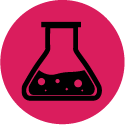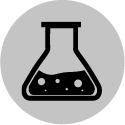
Purity,
traceability,
efficacy and
safety.
Superior quality
The Vitoli® product line is the only one that offers complete formulations containing plant extracts, vitamins and minerals. The Vitoli® product line:
- Contains only ingredients that are standardized and scientifically documented,
- Each ingredient is an active dose for a given product,
- Contains a unique and exclusive olive polyphenol complex: The Provitol® Complex.
In addition, all our ingredients come from finely selected suppliers, which guarantee a direct contractual relationship with the plant producer, which allows the highest level of purity, traceability, efficacy and safety.
Take the time to read the following six facets to fully understand the importance of the Vitoli® product line.
HOW ARE NATURAL PRODUCTS IN THE VITOLIMD RANGE FORMULATED
The natural products of the VitoliMD range are formulated to offer the best product for the targeted health benefit. Unlike the usual approach of natural health products that highlight key ingredients, the VitoliMD range offers the best formulation for each health aspect.
Therefore, when complementary approaches are known and well-documented scientifically for a given health aspect, the plant extracts in question are combined within the same product to expand its potential health benefits for our customers. Similarly, when the targeted health aspect can benefit from an intake of vitamins and/or minerals, these are added to ensure a sufficient supply.
For this reason, it usually takes up to 3 or 4 competing products to come close to the formulations of the VitoliMD natural product range:
- Compare the formulation based on the plant extracts used,
- Compare the quantity of plant extracts in the products,
- Comparer la concentration offerte par la standardisation,
- Compare the concentration offered by the standardization,
- Check the presence of vitamins and/or minerals, No other product offers ProvitolMD Complex: a blend of olive polyphenols exclusive to Idunn Technologies laboratories.
The VitoliMD product range offers the best formulations according to the highest quality standards.
Olive: much more than oil
Olives come from a small tree which is called the olive tree (family Oleaceae). Although now found in different parts of the world, the Mediterranean Sea basin accounts for 98% of the world’s olive production. Olive oil is the main source of fat in the Mediterranean diet.
There are more than 30 different polyphenols whose concentrations depend on the type of cultivar, the area of production, the extraction method and the maturity of the fruit.
Originally, it was believed that the multiple health benefits of olive oil were related to its high composition of monounsaturated fatty acids (MUFAs), particularly oleic acid. However, many vegetable oils rich in monounsaturated fatty acids do not provide the same health benefits as olive oil (sunflower, soybean and canola oil). It is the phenolic fraction, the polyphenols of olive oil, which would be largely responsible for the multiple health benefits of this oil.
It is interesting to mention that the majority of the olive’s polyphenols remain in the olive when pressed to extract the oil because they are substances soluble in water and poorly soluble in oil. About 5% of the polyphenols would be in the oil and 95% would remain in the fruit. Thus, although olive polyphenols are very beneficial molecules for health, their concentration in some oils is very low.
Bioavailability
The bioavailability of a product or a molecule is its ability to be adsorbed by the body to then become available in the blood. Usually, either these molecules remain in circulation for a fixed time and allow beneficial effects throughout the body, or they are captured by certain specific cells or organs.
Specifically for olive polyphenols, clinical studies have demonstrated their rapid uptake and human pharmacokinetics. Absorption of olive polyphenols would be virtually complete in humans with a peak concentration of hydroxytyrosol after about 2 hours. This means that in just 2 hours the adsorption of the majority of the hydroxytyrosol has taken place.
Effective dose
When it comes to effective dose, it means the dose needed to achieve a targeted health benefit. Olive polyphenols are among the only polyphenols for which we know, their human bioavailability and their effective dose for certain health benefits, very well.
Hydroxytyrosol is known for its high antioxidant potential. A study in humans has shown that as little as 1 mg per day of olive polyphenol is enough to produce a reduction of isoprostane, a precise marker of oxidative stress. This antioxidant effect was statistically significant and directly proportional to the dose of olive polyphenols ingested. The doses tested were from 1 to 4.2 mg of hydroxytyrosol. At the maximum dose, isoprostane was reduced by 35%. It is important to ask what a reduction of 35% signifies.
In comparison, a recent clinical study was conducted on reducing oxidative stress (319 sedentary, overweight women, published in 2013). These women performed 150 minutes of aerobic exercise weekly for 4 months, using isoprostane as a marker of oxidation. Those with the highest levels of isoprostane at the start of the study had the best impact with a reduction of about 25%.
The reduction of 35% measured with the intake of 4.2 mg per day of hydroxytyrosol therefore constitutes a very significant reduction in the level of oxidation. Although the antioxidant effect of olive polyphenols is comparable to the benefits of physical activity, they cannot replace the importance of physical activity in regards to health. The complement to one another is quite pertinent.
Extraordinary health benefits
The antioxidant effects of olive polyphenols are among the best documented. We suggest you consult the book ”Live Younger, Longer” to know the many health benefits in addition to the antioxidant effects on health. EFSA (European Food Safety Authority) recommends the consumption of 5 mg per day of hydroxytyrosol and its derivatives, in order to benefit from the protective effects against the oxidation of blood lipids (for the prevention of cardiovascular diseases).
Olive polyphenols and aging
Olive polyphenols have health benefits for the majority of health problems associated with aging. A group of Italian researchers even proposed in 2014 that olive polyphenols could be a natural remedy against diseases associated with aging. They are currently studying the possibility of producing enriched olive oils.
Research
Idunn Technologies Laboratories collaborate with the best scientific researchers in order to discover new natural molecules making it possible to slow down the aging process. Since 2013, 21 new groups of natural molecules have been discovered and present the best anti-aging effects ever observed in a model of cellular aging. More than 20 invention patents will flow from these important discoveries.
Modulating the aging process could reduce the incidence of all associated diseases. These diseases associated with aging are among the most important diseases of the 21st century. It is known that 80% of aging people are affected by one of these diseases.
Thus, some scientists go so far as to assert that the modulation of the metabolic pathways of primary aging could constitute one of the most important impacts on human health in the history of humanity. Anti-aging molecules could increase longevity not by prolonging the state of old age, weak or sick, longer, but by preserving metabolic and biological functions in a state similar to that of a younger organism. So it’s about “Living better, longer.”
To find out more: https://esimard.com/en/research/#researchProgram
PUBLISHED ARTICLES FROM THE RESEARCH PROGRAM
2020
- Discovery of fifteen new geroprotective plant extracts and identification of cellular processes they affect to prolong the chronological lifespan of budding yeast.
https://www.oncotarget.com/article/27615/text/
2019
- Pairwise combinations of chemical compounds that delay yeast chronological aging through different signaling pathways display synergistic effects on the extent of aging delay.
https://www.oncotarget.com/article/26553/text/ - Mechanisms by which PE21, an extract from the white willow Salix alba, delays chronological aging in budding yeast.
https://www.oncotarget.com/article/27209/text/
2017
- Caloric restriction extends yeast chronological lifespan via a mechanism linking cellular aging to cell cycle regulation, maintenance of a quiescent state, entry into a non-quiescent state and survival in the non-quiescent state.
https://www.oncotarget.com/article/20614/text/
2016
- Six plant extracts delay yeast chronological aging through different signaling pathways.
https://www.oncotarget.com/article/10689/ - Discovery of plant extracts that greatly delay yeast chronological aging and have different effects on longevity-defining cellular processes.
https://www.oncotarget.com/article/7665/text/
2015
- Longevity Extension by Phytochemicals.
https://www.mdpi.com/1420-3049/20/4/6544 - Mechanisms by Which Different Functional States of Mitochondria Define Yeast Longevity.
https://www.mdpi.com/1422-0067/16/3/5528
Standardization
It is important to know that Health Canada’s regulations regulate the formulation of natural health products without the obligation to use standardized plant extracts, except for certain specific plants.
Standardization is ensuring the presence of an active ingredient or a marker in a given dose. For some plants where the active ingredient is known, it can be assayed to ensure its presence in sufficient quantity and thus ensure the effectiveness of the product if the formulation is adequate. For example, for ginkgo biloba, these are glucoflavonoids (24% flavones glycosides) and terpenes lactones (6%). For this product, there is therefore a double standardization.
For the plants of which we do not know the exact active constituent, or where several active constituent are present, we use a marker that is either characteristic of the plant, or characteristic of the family of compounds responsible for the therapeutic effect.
Standardization also confirms that this is the right plant extract. It is clear that this is an essential element of a good quality assurance program.
It is for this reason that all plant extracts used for formulations from the Vitoli® product line are standardized extracts; this guarantees the origin, as well as the presence of the active constituents, required for the intended health benefit.
The effective dose
An effective dose is the dose at which one or more quality clinical research trials (a double-blind clinical study performed according to the best quality standards) have been able to demonstrate a significant therapeutic effect. For an effect to be considered significant, it must be clearly superior to the placebo effect and correspond to a real benefit for the individual in question.
A common commercial practice is to highlight a key ingredient and add “decorative” ingredients to create a unique formula that is purported to be more effective. “Decorative” ingredients, usually sporadically embellished for marketing reasons, are well below their effective dosages which provide little, if any, significant benefit within the formula.
It is important to know that the pharmacokinetics of active ingredients is not usually cumulative. Thus, an ingredient present at 80% of its effective dose cannot be supplemented with another ingredient at 20% of its effective dose. The effective dose is applicable to each ingredient that should play a role in the formulation, otherwise it is strictly a marketing tactic.
The Vitoli® product line is not one of these embellishing marketing tactics. All plant extracts used for the Vitoli® formulations are standardized extracts and are used at effective dosages for each ingredient.
Traceability
Canadian regulations doesn’t require a confirmed entrusted supplier for ingredients used. Thus, some companies will entrust their formulation contract to production companies, regardless of the origin of the ingredients. They will select the lowest bidder without asking any questions.
For this reason, among other things, a recent study revealed that a large number of marketed products were not compliant. According to the University of Guelph study in Ontario, published in November 2013 (Newmaster et al, 2013), two-thirds of the 44 products tested (30/44) contained substitutes or contaminants.
In the case of the Vitoli® product line, all ingredients come from finely selected suppliers, which allow the highest level of purity, traceability, efficacy and safety.
 Formulation
Formulation
HOW ARE NATURAL PRODUCTS IN THE VITOLIMD RANGE FORMULATED
The natural products of the VitoliMD range are formulated to offer the best product for the targeted health benefit. Unlike the usual approach of natural health products that highlight key ingredients, the VitoliMD range offers the best formulation for each health aspect.
Therefore, when complementary approaches are known and well-documented scientifically for a given health aspect, the plant extracts in question are combined within the same product to expand its potential health benefits for our customers. Similarly, when the targeted health aspect can benefit from an intake of vitamins and/or minerals, these are added to ensure a sufficient supply.
For this reason, it usually takes up to 3 or 4 competing products to come close to the formulations of the VitoliMD natural product range:
- Compare the formulation based on the plant extracts used,
- Compare the quantity of plant extracts in the products,
- Comparer la concentration offerte par la standardisation,
- Compare the concentration offered by the standardization,
- Check the presence of vitamins and/or minerals, No other product offers ProvitolMD Complex: a blend of olive polyphenols exclusive to Idunn Technologies laboratories.
The VitoliMD product range offers the best formulations according to the highest quality standards.
 Olive Polyphenols
Olive Polyphenols
Olive: much more than oil
Olives come from a small tree which is called the olive tree (family Oleaceae). Although now found in different parts of the world, the Mediterranean Sea basin accounts for 98% of the world’s olive production. Olive oil is the main source of fat in the Mediterranean diet.
There are more than 30 different polyphenols whose concentrations depend on the type of cultivar, the area of production, the extraction method and the maturity of the fruit.
Originally, it was believed that the multiple health benefits of olive oil were related to its high composition of monounsaturated fatty acids (MUFAs), particularly oleic acid. However, many vegetable oils rich in monounsaturated fatty acids do not provide the same health benefits as olive oil (sunflower, soybean and canola oil). It is the phenolic fraction, the polyphenols of olive oil, which would be largely responsible for the multiple health benefits of this oil.
It is interesting to mention that the majority of the olive’s polyphenols remain in the olive when pressed to extract the oil because they are substances soluble in water and poorly soluble in oil. About 5% of the polyphenols would be in the oil and 95% would remain in the fruit. Thus, although olive polyphenols are very beneficial molecules for health, their concentration in some oils is very low.
Bioavailability
The bioavailability of a product or a molecule is its ability to be adsorbed by the body to then become available in the blood. Usually, either these molecules remain in circulation for a fixed time and allow beneficial effects throughout the body, or they are captured by certain specific cells or organs.
Specifically for olive polyphenols, clinical studies have demonstrated their rapid uptake and human pharmacokinetics. Absorption of olive polyphenols would be virtually complete in humans with a peak concentration of hydroxytyrosol after about 2 hours. This means that in just 2 hours the adsorption of the majority of the hydroxytyrosol has taken place.
Effective dose
When it comes to effective dose, it means the dose needed to achieve a targeted health benefit. Olive polyphenols are among the only polyphenols for which we know, their human bioavailability and their effective dose for certain health benefits, very well.
Hydroxytyrosol is known for its high antioxidant potential. A study in humans has shown that as little as 1 mg per day of olive polyphenol is enough to produce a reduction of isoprostane, a precise marker of oxidative stress. This antioxidant effect was statistically significant and directly proportional to the dose of olive polyphenols ingested. The doses tested were from 1 to 4.2 mg of hydroxytyrosol. At the maximum dose, isoprostane was reduced by 35%. It is important to ask what a reduction of 35% signifies.
In comparison, a recent clinical study was conducted on reducing oxidative stress (319 sedentary, overweight women, published in 2013). These women performed 150 minutes of aerobic exercise weekly for 4 months, using isoprostane as a marker of oxidation. Those with the highest levels of isoprostane at the start of the study had the best impact with a reduction of about 25%.
The reduction of 35% measured with the intake of 4.2 mg per day of hydroxytyrosol therefore constitutes a very significant reduction in the level of oxidation. Although the antioxidant effect of olive polyphenols is comparable to the benefits of physical activity, they cannot replace the importance of physical activity in regards to health. The complement to one another is quite pertinent.
Extraordinary health benefits
The antioxidant effects of olive polyphenols are among the best documented. We suggest you consult the book ”Live Younger, Longer” to know the many health benefits in addition to the antioxidant effects on health. EFSA (European Food Safety Authority) recommends the consumption of 5 mg per day of hydroxytyrosol and its derivatives, in order to benefit from the protective effects against the oxidation of blood lipids (for the prevention of cardiovascular diseases).
Olive polyphenols and aging
Olive polyphenols have health benefits for the majority of health problems associated with aging. A group of Italian researchers even proposed in 2014 that olive polyphenols could be a natural remedy against diseases associated with aging. They are currently studying the possibility of producing enriched olive oils.
 Research
Research
Research
Idunn Technologies Laboratories collaborate with the best scientific researchers in order to discover new natural molecules making it possible to slow down the aging process. Since 2013, 21 new groups of natural molecules have been discovered and present the best anti-aging effects ever observed in a model of cellular aging. More than 20 invention patents will flow from these important discoveries.
Modulating the aging process could reduce the incidence of all associated diseases. These diseases associated with aging are among the most important diseases of the 21st century. It is known that 80% of aging people are affected by one of these diseases.
Thus, some scientists go so far as to assert that the modulation of the metabolic pathways of primary aging could constitute one of the most important impacts on human health in the history of humanity. Anti-aging molecules could increase longevity not by prolonging the state of old age, weak or sick, longer, but by preserving metabolic and biological functions in a state similar to that of a younger organism. So it’s about “Living better, longer.”
To find out more: https://esimard.com/en/research/#researchProgram
PUBLISHED ARTICLES FROM THE RESEARCH PROGRAM
2020
- Discovery of fifteen new geroprotective plant extracts and identification of cellular processes they affect to prolong the chronological lifespan of budding yeast.
https://www.oncotarget.com/article/27615/text/
2019
- Pairwise combinations of chemical compounds that delay yeast chronological aging through different signaling pathways display synergistic effects on the extent of aging delay.
https://www.oncotarget.com/article/26553/text/ - Mechanisms by which PE21, an extract from the white willow Salix alba, delays chronological aging in budding yeast.
https://www.oncotarget.com/article/27209/text/
2017
- Caloric restriction extends yeast chronological lifespan via a mechanism linking cellular aging to cell cycle regulation, maintenance of a quiescent state, entry into a non-quiescent state and survival in the non-quiescent state.
https://www.oncotarget.com/article/20614/text/
2016
- Six plant extracts delay yeast chronological aging through different signaling pathways.
https://www.oncotarget.com/article/10689/ - Discovery of plant extracts that greatly delay yeast chronological aging and have different effects on longevity-defining cellular processes.
https://www.oncotarget.com/article/7665/text/
2015
- Longevity Extension by Phytochemicals.
https://www.mdpi.com/1420-3049/20/4/6544 - Mechanisms by Which Different Functional States of Mitochondria Define Yeast Longevity.
https://www.mdpi.com/1422-0067/16/3/5528
 Standardization
Standardization
Standardization
It is important to know that Health Canada’s regulations regulate the formulation of natural health products without the obligation to use standardized plant extracts, except for certain specific plants.
Standardization is ensuring the presence of an active ingredient or a marker in a given dose. For some plants where the active ingredient is known, it can be assayed to ensure its presence in sufficient quantity and thus ensure the effectiveness of the product if the formulation is adequate. For example, for ginkgo biloba, these are glucoflavonoids (24% flavones glycosides) and terpenes lactones (6%). For this product, there is therefore a double standardization.
For the plants of which we do not know the exact active constituent, or where several active constituent are present, we use a marker that is either characteristic of the plant, or characteristic of the family of compounds responsible for the therapeutic effect.
Standardization also confirms that this is the right plant extract. It is clear that this is an essential element of a good quality assurance program.
It is for this reason that all plant extracts used for formulations from the Vitoli® product line are standardized extracts; this guarantees the origin, as well as the presence of the active constituents, required for the intended health benefit.
 Effective dose
Effective dose
The effective dose
An effective dose is the dose at which one or more quality clinical research trials (a double-blind clinical study performed according to the best quality standards) have been able to demonstrate a significant therapeutic effect. For an effect to be considered significant, it must be clearly superior to the placebo effect and correspond to a real benefit for the individual in question.
A common commercial practice is to highlight a key ingredient and add “decorative” ingredients to create a unique formula that is purported to be more effective. “Decorative” ingredients, usually sporadically embellished for marketing reasons, are well below their effective dosages which provide little, if any, significant benefit within the formula.
It is important to know that the pharmacokinetics of active ingredients is not usually cumulative. Thus, an ingredient present at 80% of its effective dose cannot be supplemented with another ingredient at 20% of its effective dose. The effective dose is applicable to each ingredient that should play a role in the formulation, otherwise it is strictly a marketing tactic.
The Vitoli® product line is not one of these embellishing marketing tactics. All plant extracts used for the Vitoli® formulations are standardized extracts and are used at effective dosages for each ingredient.
 Traceability
Traceability
Traceability
Canadian regulations doesn’t require a confirmed entrusted supplier for ingredients used. Thus, some companies will entrust their formulation contract to production companies, regardless of the origin of the ingredients. They will select the lowest bidder without asking any questions.
For this reason, among other things, a recent study revealed that a large number of marketed products were not compliant. According to the University of Guelph study in Ontario, published in November 2013 (Newmaster et al, 2013), two-thirds of the 44 products tested (30/44) contained substitutes or contaminants.
In the case of the Vitoli® product line, all ingredients come from finely selected suppliers, which allow the highest level of purity, traceability, efficacy and safety.


 Formulation
Formulation
 Olive Polyphenols
Olive Polyphenols
 Research
Research
 Standardization
Standardization
 Effective dose
Effective dose
 Traceability
Traceability